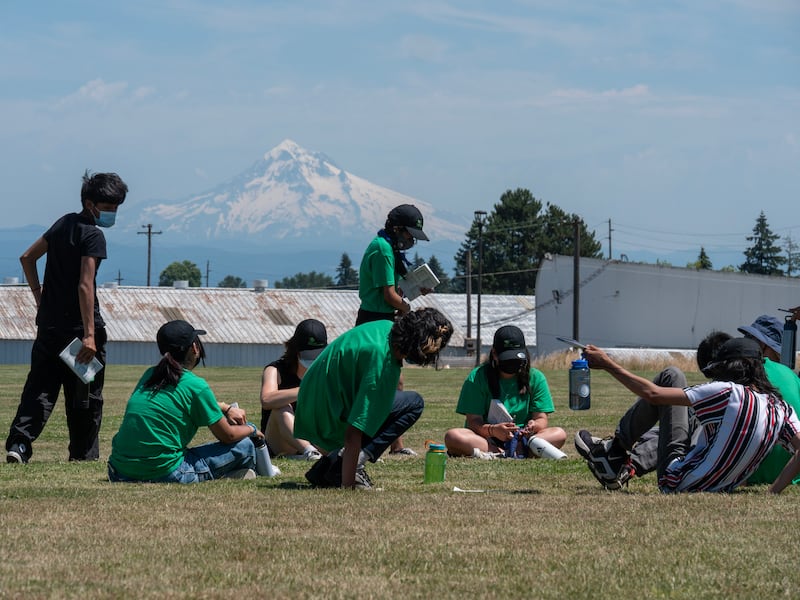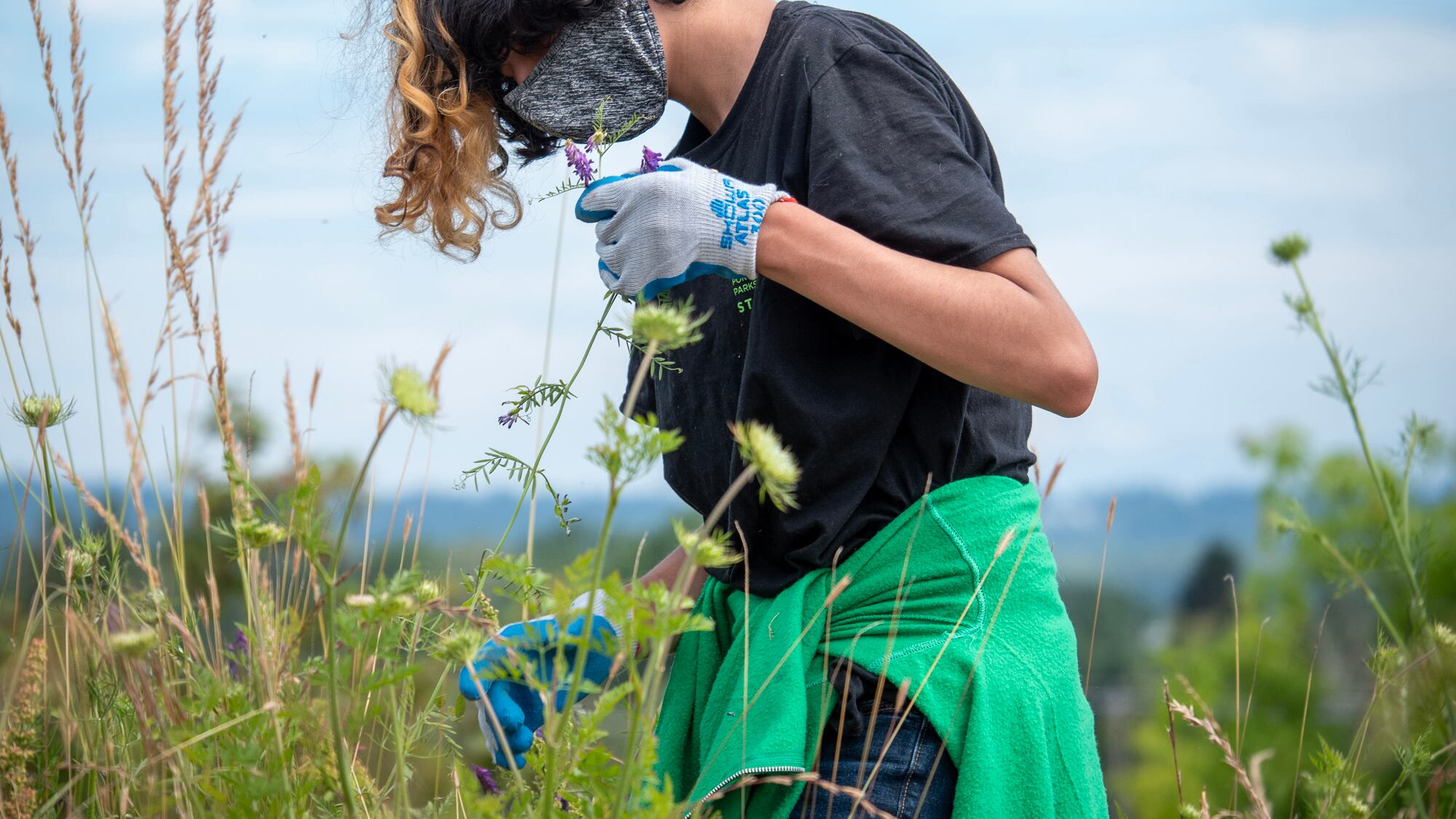On a small rise overlooking Cully Park, an incoming McDaniel High School freshman named Adrian is pulling armfuls of vetch from the ground.
He and nine other teenagers are up to their waists in tall grass on an already warm July morning in deep Northeast Portland. Wearing gardening gloves, T-shirts and face coverings, the teens chatter while they uproot vetch, an aggressive pea vine that competes with native plants. It has to go.

These kids are members of the Youth Conservation Crew, a program for 14- to 18-year-olds run by Portland Parks & Recreation that sends five teams to plant trees, clear trails and yank unwanted plants in city parks starting at $14.75 an hour. This group, which tends community gardens, is the newest in the city, established just last year within the YCC.
If you hear echoes of the New Deal in that name, you’re not wrong: Like the Works Progress Administration of another century, this city program is trying to mend an unfair society by putting young people to work.
Yeah, from one point of view it’s just a summer job: These teens are following in the footsteps of anybody who’s ever spent a few hot months in a lifeguard chair or behind the counter of a Hot Dog on a Stick.
But as Portland grows hotter each summer—especially in East Portland—Adrian and his crewmates are tending gardens in a place where relief from the sun is hard to come by: their own neighborhoods.
For decades, East Portland has suffered from a shortage of greenspace. Some 40% of households east of Interstate 205 can’t walk to a park within 15 minutes of their homes. Trees are scarcer, too. Cully Park (which lies just west of I-205) is itself built over a landfill that closed in 1990. Methane gas still burbles from a large gray pipe—called a “flare”—at the park’s edge as what was dumped here slowly decomposes.
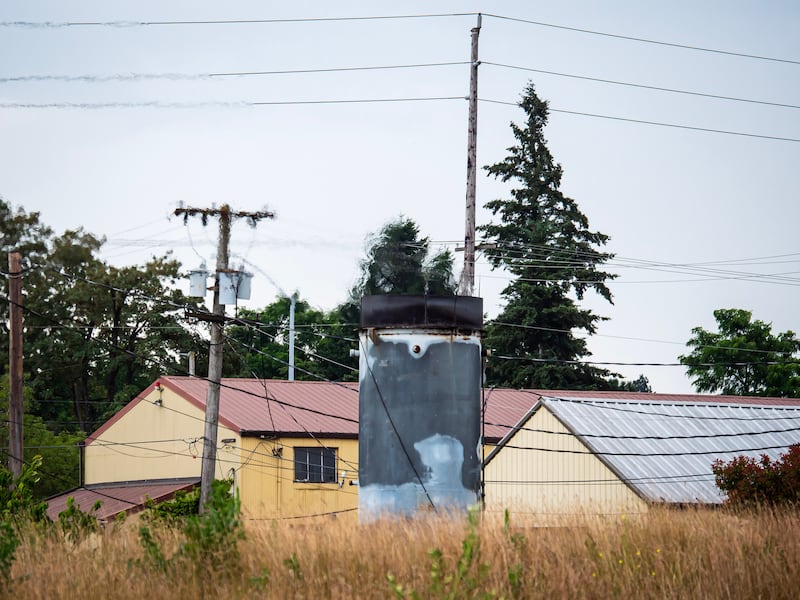
At the same time, East Portland has the city’s greatest concentration of kids under 18.
Kids from these neighborhoods are more likely to be low-income people of color. They’re less likely to spend time in nature—or seek a career in it. Until joining this program, few of them knew that the bluffs that make up Cully Park are places where Indigenous tribes have long grown—and continue to grow—food for their communities.
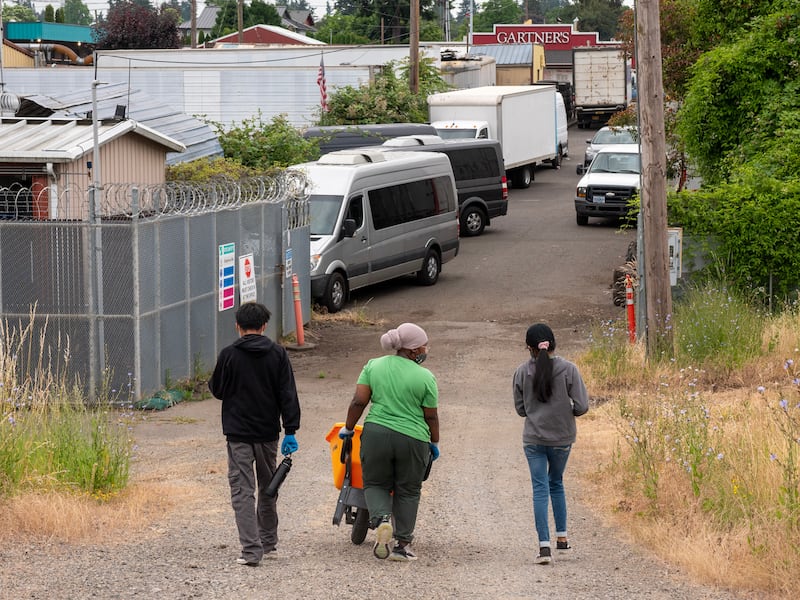
It is a modest project: 10 kids in gardens, for seven weeks, lugging water buckets and pushing wheelbarrows.
But at a moment when all federal efforts to arrest global warming appear stymied by West Virginia Sen. Joe Manchin, and local efforts to rectify climate injustice are cash rich but untested, Portland could use any win it can get.
This photographer spent several days over the past two weeks in Cully Park with the kids of the Youth Conservation Crew’s community gardens team. In the following pages, we’ll show you why a day in the garden matters.

The crew restores land scarred by industry to what it once was.
Brenda, along with her crewmates Alex and Yasmin, continue their battle with vetch. Against a backdrop of tractor tires and semi trailers, they fill a yellow wheelbarrow with armloads of tangled vines.
The teens are in the Cully Park Native Gathering Garden, where plants are intentionally chosen for their native or cultural significance: thimbleberry, yarrow, salal, camas and fireweed. Indigenous land care practices are used to tend them.
The scars of heavy industry are easily visible from this knoll: not just the methane flare, but a warehouse overflowing with used tires, and the silhouette of the Owens-Brockway glass recycling plant, which was hit with a $1 million state fine last year for releasing toxins into the neighborhood air.

But by working here, Brenda and her peers are learning about a history that predates the landfill.
“This is land that Indigenous people have gathered on, cared for and lived on for millennia, since time immemorial,” says Nichole Bruno, Native Gathering Garden coordinator. “Which means there is not a time that people can remember that there were no Indigenous people on this land.”

The teens’ work gets them thinking about the planet’s future—and their own.
As the temperature pushes into the 80s, a Sunset High School junior named Peter grunts while lugging a 5-gallon water bucket from the irrigation spigot. He and his crewmates are hauling bucket after bucket to specific locations in the garden, then gingerly pouring water on select plants.
Peter has been thinking about how this work could help a warming planet. “Improving the plant ecosystems overall will help more plants thrive, and I think that will help aid climate change,” he says. “It stops the amount of CO2 emissions, or reduces them. I think we are making a real impact.”

What might make a larger impact is if the summer job spurs Peter into a green career. He’s weighing his options for college and beyond. “I was always looking to become an engineer, but through this job, I think maybe an environmental engineering field could be more suited to me,” he says. “I’ll look into going somewhere with good environmental science studies.”
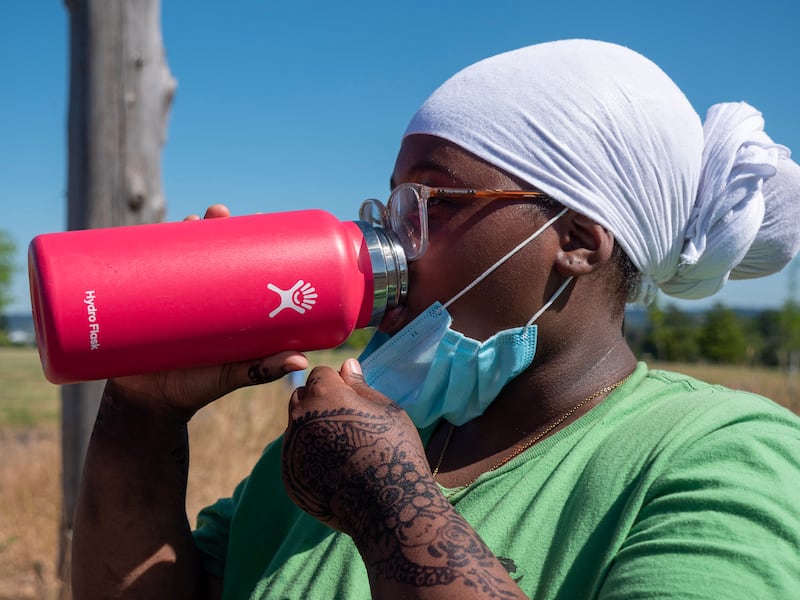
They care for each other while caring for the land.
Every 15 minutes or so, when the temperature is at its hottest, a crew or staff member shouts, “WAM!”—short for “water appreciation moment”—and all within earshot must chug from their bottles.
“We focus a lot on wellness and making sure we take breaks,” says crew sponsor Max Rodrigues, who manages the group. “It’s really easy not to.”
Raised in the Portland area with a degree in natural resources, Rodrigues is in their first year with the YCC program. They say the program looks for teenagers of color and other marginalized communities—”not to tokenize them, but to give them the opportunity to experience this field, which is otherwise pretty hard to get into if you don’t already have knowledge of it.”

Bruno agrees: “When we’re caring for the land, we have to care for ourselves as well,” she says. “And we have to care for each other.” During a lull between activities, Bruno switches on some of the lawn sprinklers, and the crew runs wild through arcs of water like the kids they are.
On a lunch break, crew members Angelica and Amira sit together. They’ve just discovered they’ll both be attending Centennial High School in the fall, Amira as a sophomore and Angelica as a freshman.
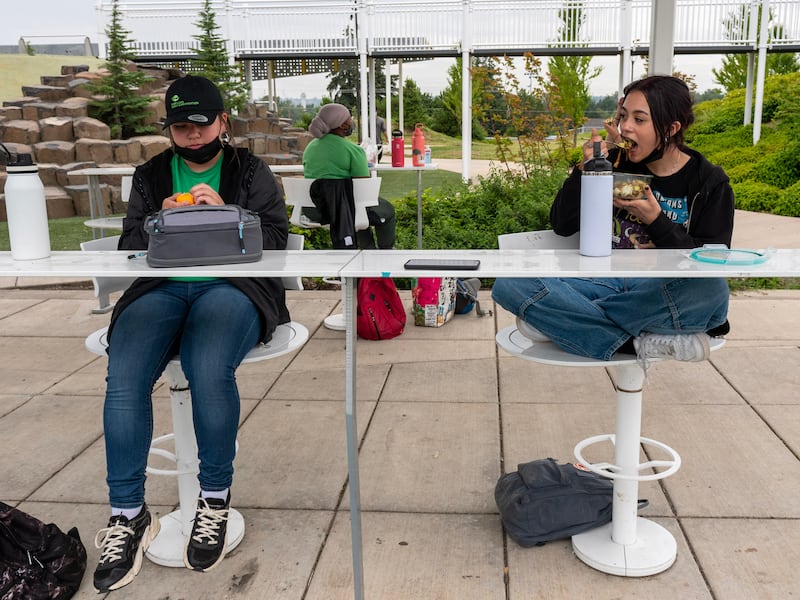
Angelica is nervous about starting high school. “I don’t want to get lost or be late, and then everyone just looks at me while I’m walking through the door,” she confides.
“I got lost very regularly for the first month and a half,” Amira confidently reassures her.

The team cleans up for the day, but their work is just beginning.
After about six hours of labor and activities, it’s time to wind down for the day. Into the storage shed go the buckets, E-Z UP tents and hand tools. Trash and recycling is collected. The teens fill out written logs of their progress; one whose English is limited is helped with his log by another.
Each crew member has a different story of how the work is changing them.
One talks about the financial boost it provides their family. Another describes helping his mother identify native and non-native species in her yard. More than one teen mentions having grandparents who love to garden, but whose parents struggle to find the time or the space to grow things at home.
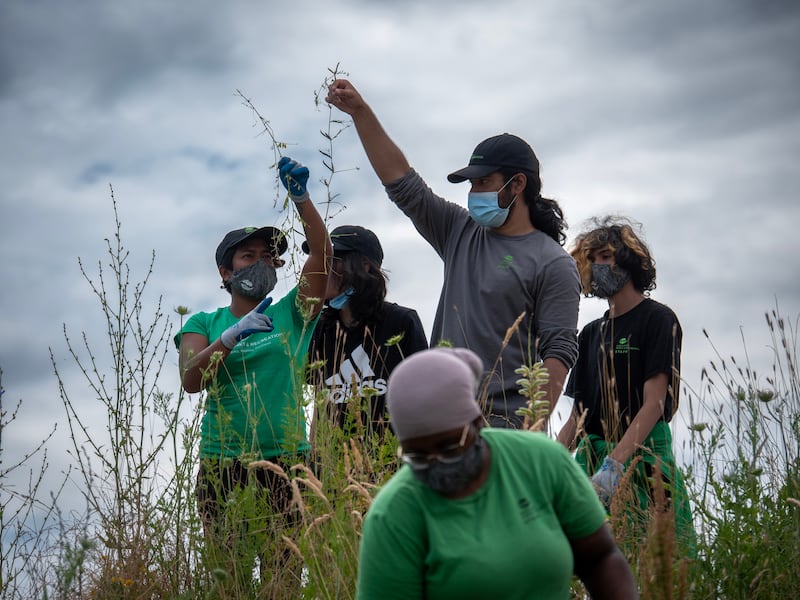
“I think we make a good team,” says Zoya, who will begin her freshman year of high school in September. “Community gardens are important. We can learn how to grow food. We can learn how plants are important medicinally. And they make our city really beautiful.”
Their time in Cully is growing short. Each week through mid-August, they will tackle a new garden somewhere in the city. Next week, they’ll head east to the new Knott Community Garden near Northeast 117th Avenue.
